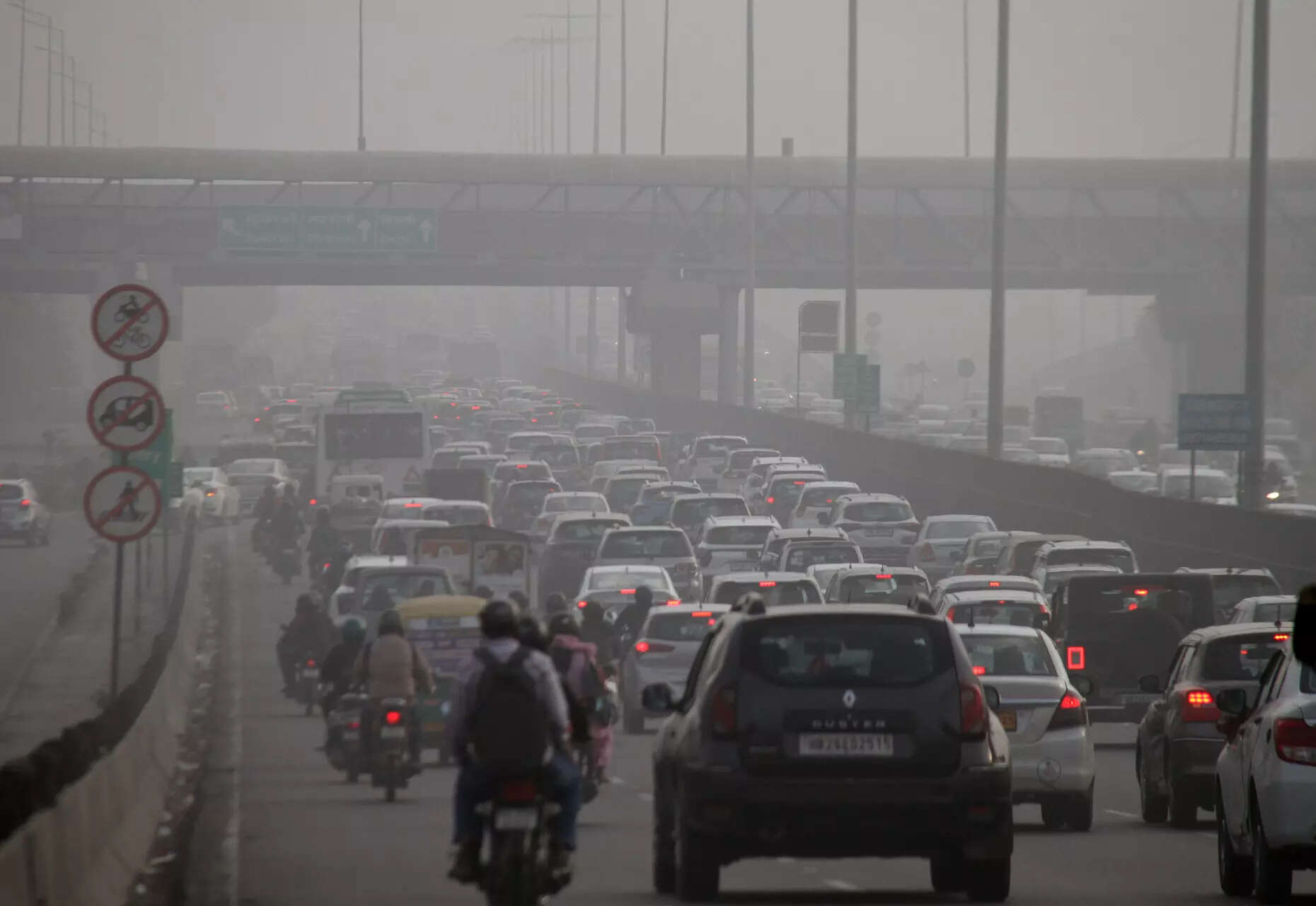
New Delhi: Lieutenant governor VK Saxena, at a meeting to review preparedness on pollution checks for winter, has highlighted that the hazardous impact of vehicle emissions and dust on Delhi’s air remains largely unaddressed.
At the meeting with the chairman, Commission for Air Quality Management (CAQM), Delhi chief secretary, MCD commissioner as well as senior officials from the irrigation and flood control, environment department and traffic, among others, Saxena stressed on short-term issues too.
While discussing long-term issues, the LG mentioned that the heavy monsoon this year had provided unprecedented relief in terms of air quality, but the adverse impact of emissions from vehicles and from dust pollution had not been adequately discussed, although these factors are the largest contributors to air pollution in the city in terms of PM10 and PM2.5 levels.
The LG also mentioned an IIT-Kanpur study which had shown that the contribution of dust to pollution had dropped from 26% to 20% between 2018 and 2022, while the contribution of vehicular emission had gone up from 39% to 47% in the same time.
“The LG observed that the same would have increased multi-fold, especially in the light of the condition of roads in the city and lack of coverage/carpeting of footpaths and flanks of the roads,” a statement from the LG’s office said.
The statement added that Saxena asked officials to do an evidence-based empirical study on the matter and directed that concerted steps be taken to repair roads and ensure end-to-end ecologically suitable road carpeting. He also directed PWD and MCD to look into this matter.
He pointed out that the condition of industrial areas was “pathetic,” and advised the industrial corporation to fix roads, footpaths and garbage management.
He spoke about the advantage of having non-polluting electric buses in the city’s fleet, but also pointed to the pollution from emission caused mostly by empty DTC buses plying without passengers.
The average occupancy of DTC buses stands at only 48%. These buses occupy disproportionate road space and slow down traffic, in the process augmenting vehicular emission, the statement said, adding: “He asked the transport department to rationalise bus routes and frequencies.”
Speaking of short-term measures, the LG gave a slew of instructions “without waiting for AQI levels to drop.”
Among the steps he suggested were the deploying of anti-smog guns that rotate 180 degrees to be placed on all high-rises above seven floors, and ensuring that construction material remained covered. He also said that completion certificates to buildings should be issued only after the waste is removed.
He asked DPCC and other agencies to ensure that there is no open burning.
He also asked for implementation in advance of a scheme of staggered office timings and working from home, and compulsory mechanical road sweeping.
Aam Aadmi Party (AAP) said that the pollution situation in Delhi had improved “despite roadblocks from the Centre.”
“Arvind Kejriwal-led AAP govt, through several long-term and short-term measures and with the support of the people of Delhi, has seen a rapid decline in pollution levels. The same was also evidenced by the economic survey 2022-2023 tabled in Parliament recently,” a reaction from AAP said.

